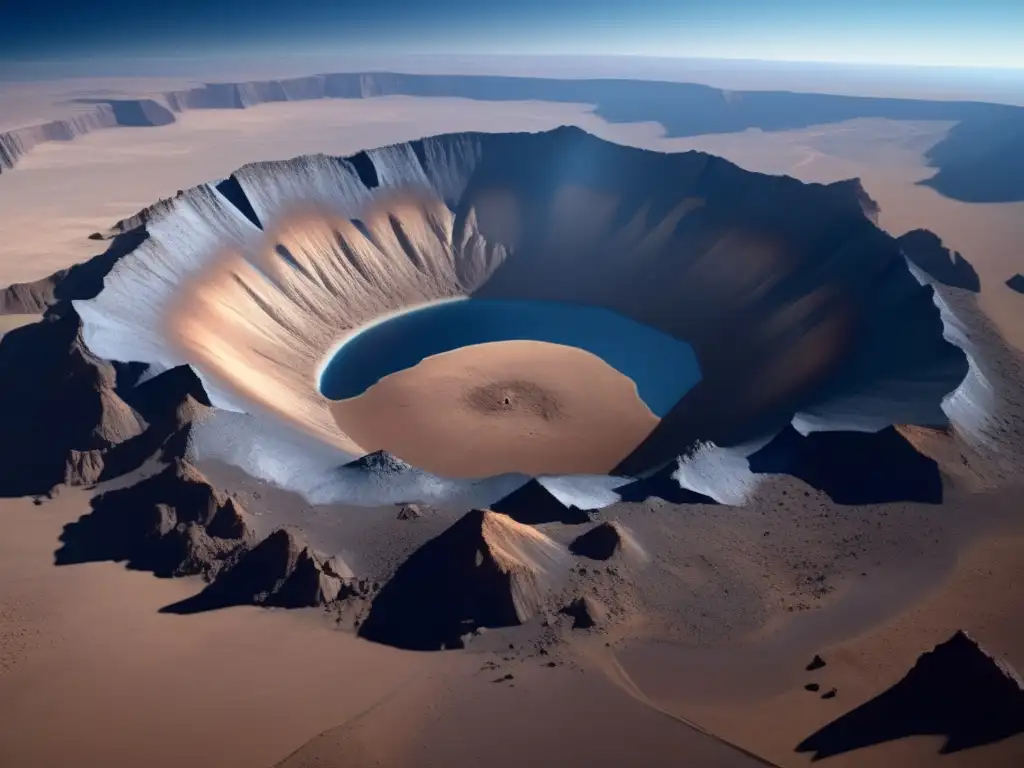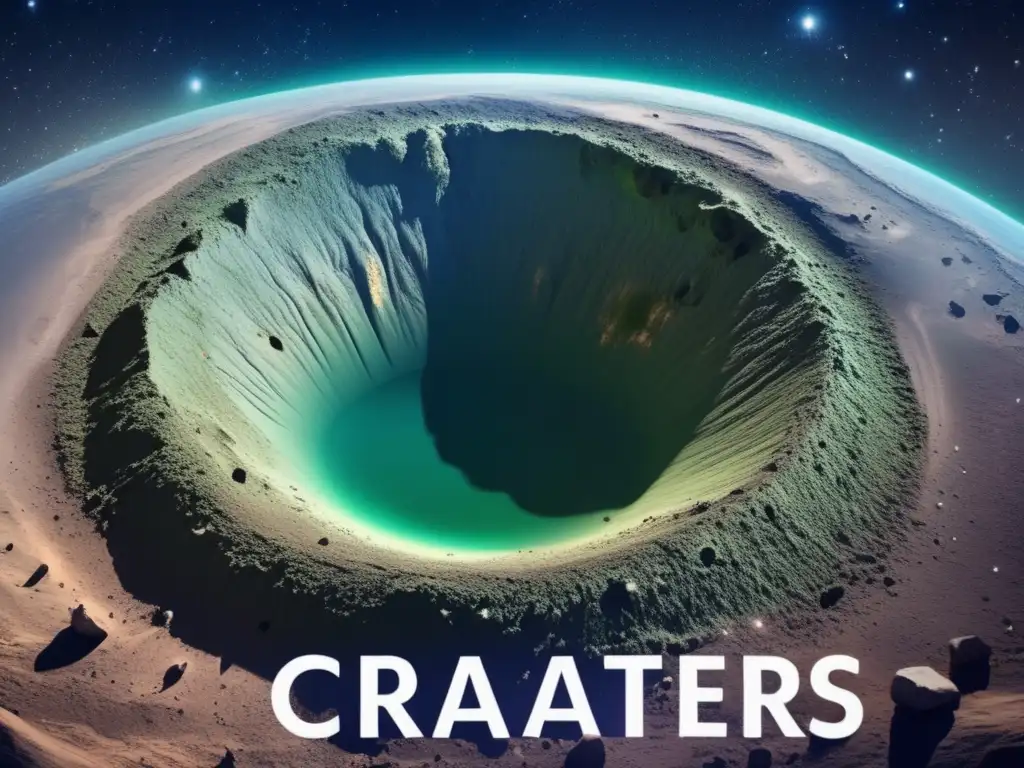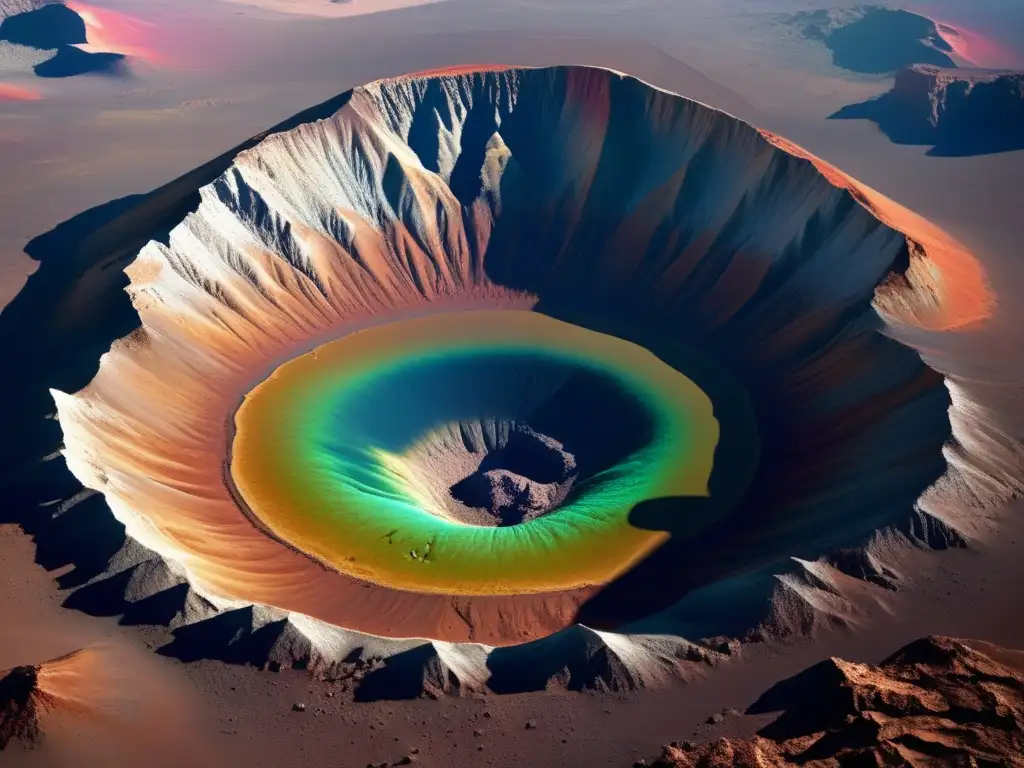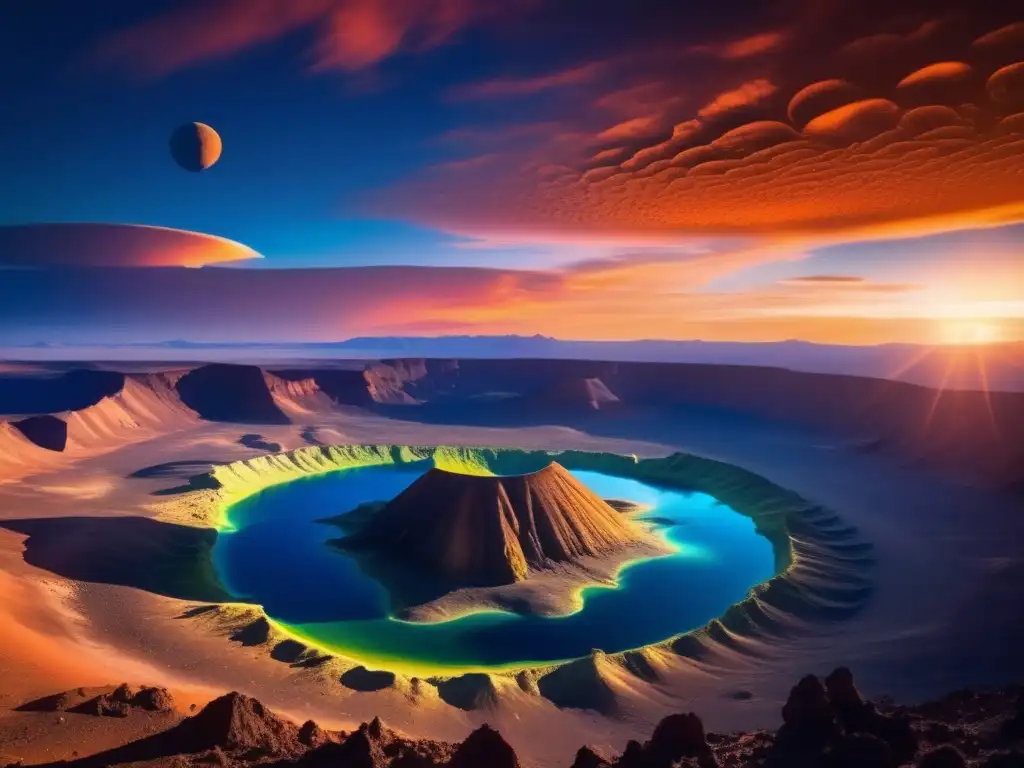Painting A Picture Of The Past: Impact Craters And Their Stories

Introduction
When we look at the surface of the Moon or other planets, we can see the marks left by asteroid impacts. Earth is no exception. The impact craters scattered throughout our planet tell us stories about its past and the role asteroids have played in shaping it. In this article, we will explore the fascinating world of impact craters and the valuable information they provide about our history and the nature of asteroids.
The Formation of Impact Craters

The Mechanics of an Impact Event
When an asteroid crashes into a planet or a moon, the energy released by the impact is immense. Depending on the size and velocity of the asteroid, the collision can generate shock waves and pressure that subsequently create a crater. During the impact, the asteroid may vaporize, fragment, or melt while the target body undergoes deformation and excavation.
The Anatomy of an Impact Crater
An impact crater consists of several distinct features that reveal the processes that occurred during the impact event. These features include:
- Rim: The raised edge of the crater that surrounds the circular depression in the ground.
- Ejecta: The material that was thrown out of the crater during the impact and deposited around the rim or farther away.
- Breccia: A type of rock formed by the fusion and fragmentation of the target material during the impact.
- Central peak: A mountain-like structure that rises from the center of larger craters due to the rebound of the impact site.
- Impact melt: The molten material produced by the heat of the impact that solidifies into a glassy or crystalline form.
The Significance of Impact Craters

Chronology and Dating
Impact craters are like time capsules that record the history of a planet or moon. By analyzing the distribution, size, and shape of craters on a planetary surface, scientists can estimate the age of the surface and the rate of impacts over time. This information is essential for understanding the formation and evolution of a planetary system, including Earth.
Mineral Resources
The study of impact craters can also provide insights into the abundance and distribution of valuable minerals on a planet or moon. Some impact craters, such as the Sudbury Basin in Canada, have been shown to contain significant deposits of nickel, copper, and other metals that are essential for modern technology.
Climate Change
Impact craters may have played a role in climate change on Earth. Some large impacts could have caused dust and debris to be ejected into the atmosphere, reducing the amount of sunlight that reached the surface and resulting in global cooling. Conversely, smaller impacts could have released gases, such as carbon dioxide, into the atmosphere, contributing to global warming.
The Future of Impact Crater Study

Advances in Technology
New technologies are revolutionizing the way we study impact craters. High-resolution satellite imagery and LIDAR (Light Detection and Ranging) technology allow us to map and analyze craters with unprecedented accuracy and detail. Additionally, robotic missions to asteroids and comets, such as NASA's OSIRIS-REx and ESA's Rosetta missions, are providing us with first-hand data on the composition and structure of these objects.
Planetary Protection
The study of impact craters is also crucial for planetary protection. Understanding the frequency and potential consequences of asteroid impacts on Earth and other planets can help us develop strategies to mitigate or prevent such events. This includes asteroid deflection techniques, early warning systems, and impact hazard assessment, all aimed at safeguarding our planet.
Frequently Asked Questions

-
What is the biggest impact crater on Earth?
The largest confirmed impact crater on Earth is the Vredefort Crater in South Africa, which measures about 300 kilometers (186 miles) in diameter.
-
Can new impact craters still form on Earth?
Yes, although the chances are low. According to NASA, an asteroid large enough to form a crater over 1 kilometer (0.6 miles) in diameter hits Earth once every few hundred thousand years.
-
Do all asteroids create impact craters?
No, only asteroids that collide with a solid surface, such as a planet or moon, can create impact craters. If an asteroid enters Earth's atmosphere and disintegrates before reaching the ground, it will not create a crater.
-
Why are impact craters important for astrobiology?
Impact craters may have played a role in the emergence and evolution of life on Earth. They provide sheltered environments where life could have originated and survived, protected from harsh conditions on the surface. Additionally, the impact process itself can create organic molecules and other building blocks of life.
-
What is the significance of the Chicxulub crater?
The Chicxulub crater, found in Mexico's Yucatan Peninsula, is believed to be the impact site of the asteroid that caused the extinction of dinosaurs about 66 million years ago. The crater provides valuable information about the nature of the impact and its consequences, including the release of a massive amount of energy, the formation of a global firestorm, and the extinction of a large proportion of life on Earth.
Conclusion
Impact craters are much more than just geological features on a planetary surface. They are the remnants of violent events that occurred billions of years ago and continue to shape our understanding of the cosmos. By studying impact craters, we can learn about the history and evolution of our planet, the nature of asteroids and comets, and the ways in which we can protect ourselves from potential impact hazards. We encourage you to continue exploring this fascinating field and share your thoughts with us!
Additional Resources

For more information on impact craters and related topics, please visit:
- The Chicxulub Impact Event
- NASA Asteroid and Comet Watch
- The Microbial World in Impact Craters
- Mineral Resources in Impact Craters
 Planet Protectors: Strategies To Prevent Asteroid Impacts
Planet Protectors: Strategies To Prevent Asteroid Impacts The Aftershock Of Asteroids: Post-Impact Seismic Activity
The Aftershock Of Asteroids: Post-Impact Seismic Activity Buried Evidence: Unearthing Ancient Asteroid Impact Sites
Buried Evidence: Unearthing Ancient Asteroid Impact SitesIf you want to discover more articles similar to Painting A Picture Of The Past: Impact Craters And Their Stories, you can visit the Asteroid Impacts category.
Leave a Reply

Articulos relacionados: